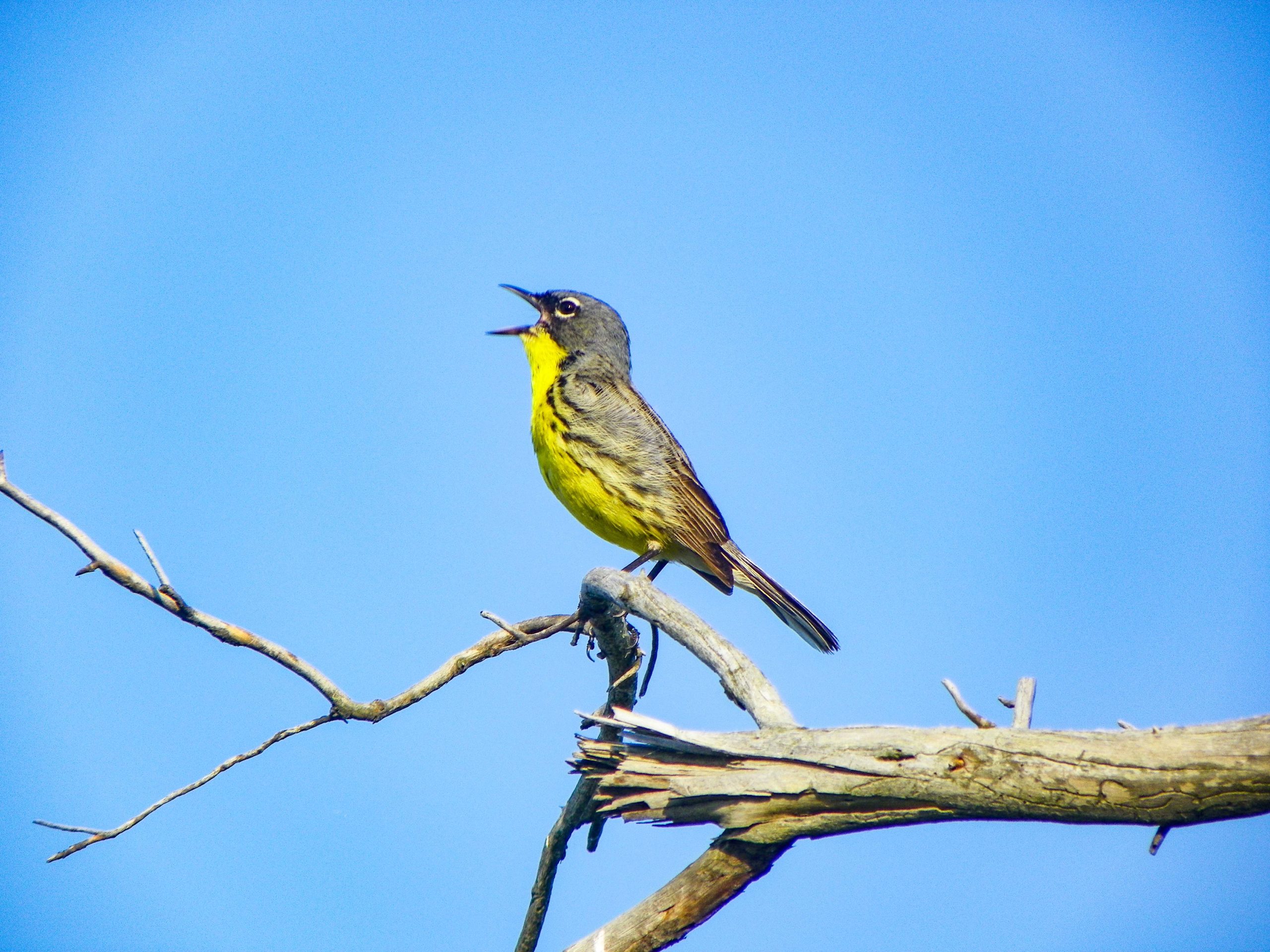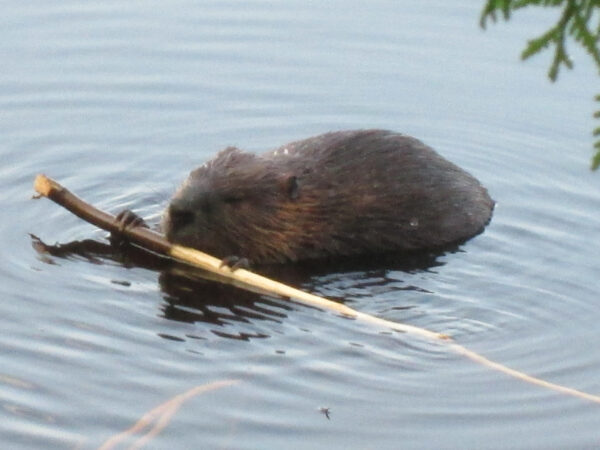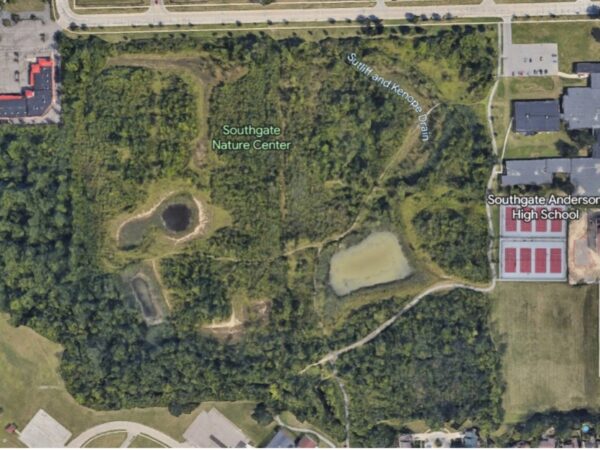
Great Lakes Moment is a monthly column written by Great Lakes Now Contributor John Hartig. Publishing the author’s views and assertions does not represent endorsement by Great Lakes Now or Detroit Public Television.
Once living on the brink of extinction, the Kirtland’s warbler is now thriving thanks to collaborative conservation efforts.
The Kirtland’s warbler is one of the largest and rarest songbirds in North America. This handsome yellow-and-gray warbler is named for Dr. Jared Kirtland, on whose farm near Cleveland, Ohio, the first specimen was collected in 1851. Biologists finally discovered the first nest for the species in northern lower Michigan in 1903.
Ornithologists refer to the Kirtland’s warbler as a true habitat specialist – meaning it has very specific requirements for breeding. They build their nests on the ground only in young jack pine forests in northern and central Michigan, with small numbers in Minnesota, Wisconsin and Ontario.
Like many other snowbirds who migrate from the colder northern parts of North America to warmer southern locales, the Kirtland’s warbler migrates some 3,400 miles to the Bahamas and the Turks and Caicos Islands to overwinter. They then return to more northern latitudes in the summer to reproduce.
Always considered a rare bird with a limited range, the Kirtland’s warbler began to decline significantly in the 1960s.
The birds are found by ornithologists listening for singing males advertising and defending nesting territories. Each male is then presumed to have a mate, so the number of males also indicates the number of nesting pairs.
Census numbers dropped from 502 singing males in 1961 to only 167 in 1974. This meager population was considered to be in crisis by state and federal resource managers. Through the remaining portion of the 1970s and the 1980s, the annual counts hovered around 200 males. Since 1990, the numbers have gradually increased. The 2021 population numbers have now been tallied and the Kirtland’s warbler population is estimated at 2,245 pairs, which is more than double the 1,000-pair recovery goal for the species. It should be noted that the recovery goal has been exceeded over each of the past 20 years.
In celebration of this conservation success story, the state of Michigan is featuring a Kirtland’s warbler license plate in 2022.
State and federal resource management agencies and conservation groups are helping the Kirtland’s warbler by providing more habitat through controlled burns that create the stands of young jack pines needed by the warbler, clear-cutting certain areas and manually or mechanically planting jack pine seedlings to regenerate necessary habitat. They also control the numbers of parasitic cowbirds in the nesting areas. Cowbirds are nest parasites that lay their eggs in the nests of Kirtland’s warblers and other bird species. The larger cowbird chicks out-compete warbler chicks for food, which causes them to die, while the warbler parents unknowingly raise the cowbird chicks.
Thanks to sound science and effective collaboration among state and federal governments and conservation groups, the Kirtland’s warbler has flown off the endangered species list. Continued conservation efforts are underway through the Kirtland’s Warbler Conservation Team and the Kirtland’s Warbler Breeding Range Conservation Plan.
“The power of partnership continues to yield excellent results for the Kirtland’s warbler after coming off the endangered species list,” said U.S. Fish and Wildlife Service Regional Director Charlie Wooley.
The Kirkland’s warbler is truly a beloved songbird in Michigan. People come from all over the world to hear and see this once federally endangered bird species and to celebrate this conservation success story.
Dr. Jim Bull of Detroit Audubon has had a life-long fascination with Kirtland’s warblers. What drew him to this rare songbird is its beguiling nature, its striking bluish gray back and yellow breast outlined in black streaks, as well as its boisterous, melodic song. Bull’s family made a yearly pilgrimage to jack pine forests in northern Michigan to hear and see the Kirtland’s warblers. His father helped organize the first census of this species in 1951, nearly two years before his son was born.
Early in Bull’s career, he did research on parasitism of warbler nests by brown-headed cowbirds as a biology major at Adrian College. Later he worked as a biologist for the U.S. Forest Service leading Kirtland’s warbler tours. Today, he is the longest serving volunteer on the Kirtland’s warbler census and serves on the board of the Kirtland’s Warbler Alliance – a nonprofit organization dedicated to raising awareness about and promoting conservation of this amazing species.
“After almost 50 years of hard work, the Kirtland’s warbler has recovered to the point of being taken off the endangered species list,” Bull noted. “I call it a comeback bird for a comeback state. Like a Phoenix it rises from the ashes of fire, or did, and now rises from clearcutting that mimics fire, and its song and its presence makes the sandy jack pine plains reverberate with song and beauty. This conservation triumph is a tribute to human ingenuity and caring. How lucky we are in this state to have this beautiful Michigan original.”
John Hartig is a board member at the Detroit Riverfront Conservancy. He serves as a Visiting Scholar at the University of Windsor’s Great Lakes Institute for Environmental Research and has written numerous books and publications on the environment and the Great Lakes. Hartig also helped create the Detroit River International Wildlife Refuge, where he worked for 14 years as the refuge manager.
Catch more news on Great Lakes Now:
Great Lakes Moment: Small habitat patches can have big ecological impact
Featured image: Kirtland’s Warbler (Photo courtesy of Michigan Department of Natural Resources)




